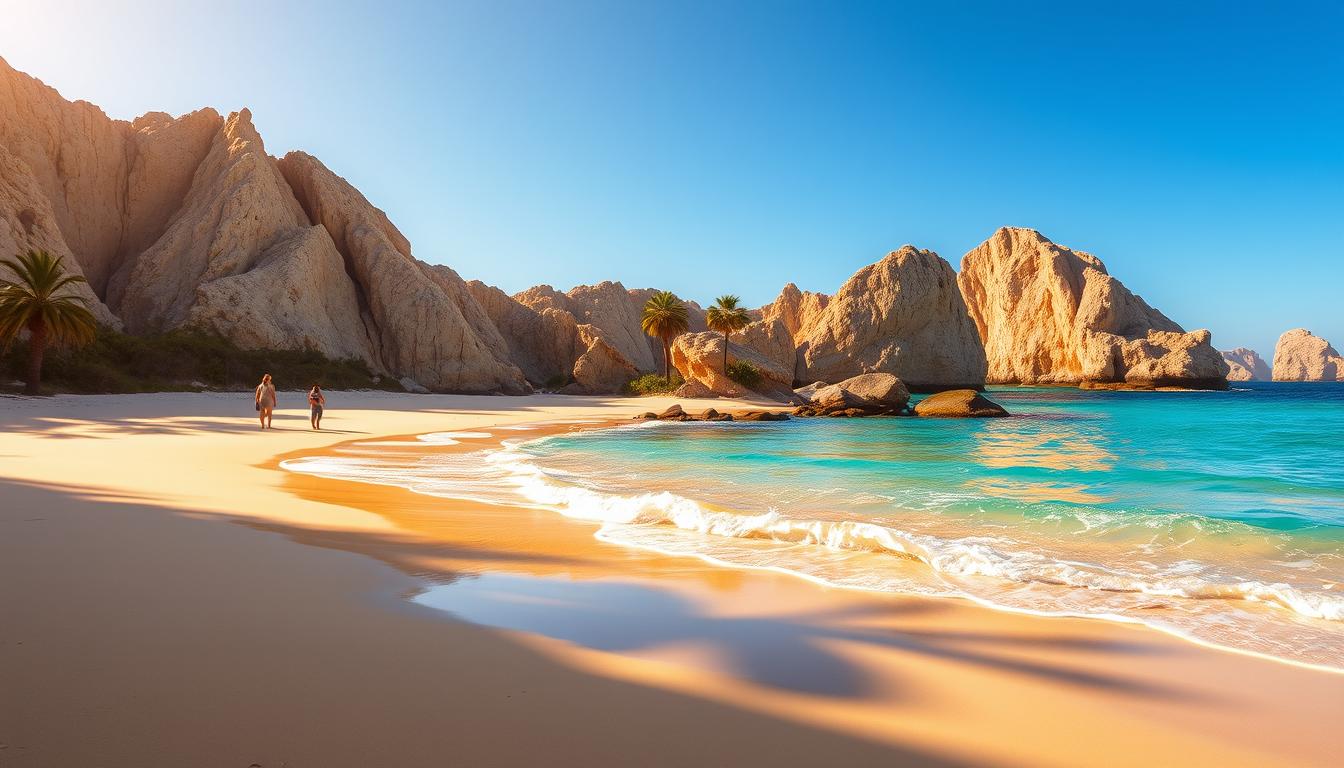Australia is renowned for its stunning coastline, boasting 11,761 named beaches along its 37,000 km coastline. The country’s diverse beaches range from bustling stretches of sand to isolated beauty spots, offering a paradise for every kind of traveler.
This comprehensive guide will take you on a journey to explore the most spectacular beaches across Australia’s diverse states and territories. From Queensland’s tropical paradises to Tasmania’s dramatic coastal landscapes, you’ll discover the unique beauty and breathtaking views that make each beach special.
Whether you’re planning a dedicated beach holiday or looking to incorporate beach visits into a broader Australian adventure, this guide will help you identify the perfect coastal destinations for your travel plans.
Australia’s Coastal Paradise: A Beach Lover’s Dream
With its vast and varied coastline, Australia presents a beach lover’s dream, featuring everything from bustling urban beaches to secluded natural havens. The country’s beaches are renowned for their exceptional cleanliness, safety standards, and natural beauty.
Australia’s extensive coastline offers an unparalleled diversity of beach experiences. The beaches range from tropical northern beaches with crystal-clear waters to dramatic southern shores with breathtaking landscapes.
- Powdery white sand and crystal-clear waters in stunning shades of blue and turquoise
- Dramatic coastal landscapes and spectacular views of the surrounding environments
- Ideal conditions for swimming, snorkeling, diving, and surfing
The characteristics of Australian beaches make them a paradise for beach lovers. Many beaches offer spectacular views, from tropical rainforests meeting the shore to dramatic cliff formations and mountain backdrops.
| Beach Characteristics | Description | Activities |
|---|---|---|
| Powdery White Sand | Squeaks underfoot, pristine condition | Relaxing, sunbathing |
| Crystal-Clear Waters | Stunning shades of blue and turquoise | Swimming, snorkeling, diving |
| Dramatic Coastal Landscapes | Breathtaking views, unique formations | Photography, hiking |
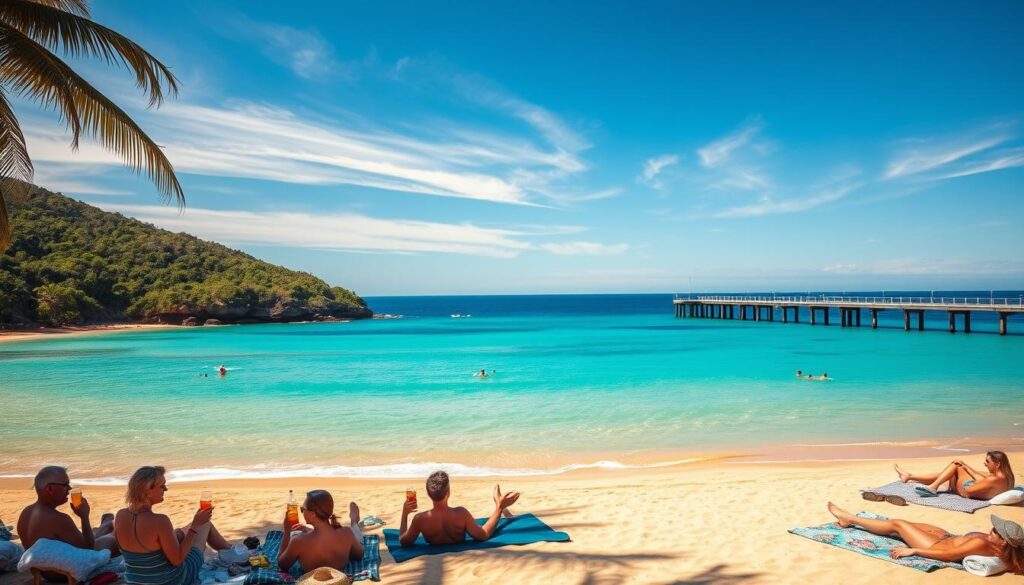
Australia’s beaches provide world-class opportunities for various water activities, making it a true paradise for beach enthusiasts and adventure seekers alike.
What Makes Australian Beaches Special
Australian beaches are renowned for their exceptional beauty and pristine conditions. They stand out globally for their natural splendor, featuring blindingly white sand composed of pure silica that remains cool underfoot even on the hottest days.
The clarity and color of the waters surrounding Australian beaches are remarkable, ranging from deep sapphire blue to brilliant turquoise, creating a striking contrast against the white sand. Many Australian beaches remain relatively undeveloped, preserving their natural state and ecological significance.
- The country’s beaches are often set against dramatic backdrops, including ancient rock formations and lush rainforests.
- Australia’s commitment to beach conservation has helped maintain the pristine condition of its beaches.
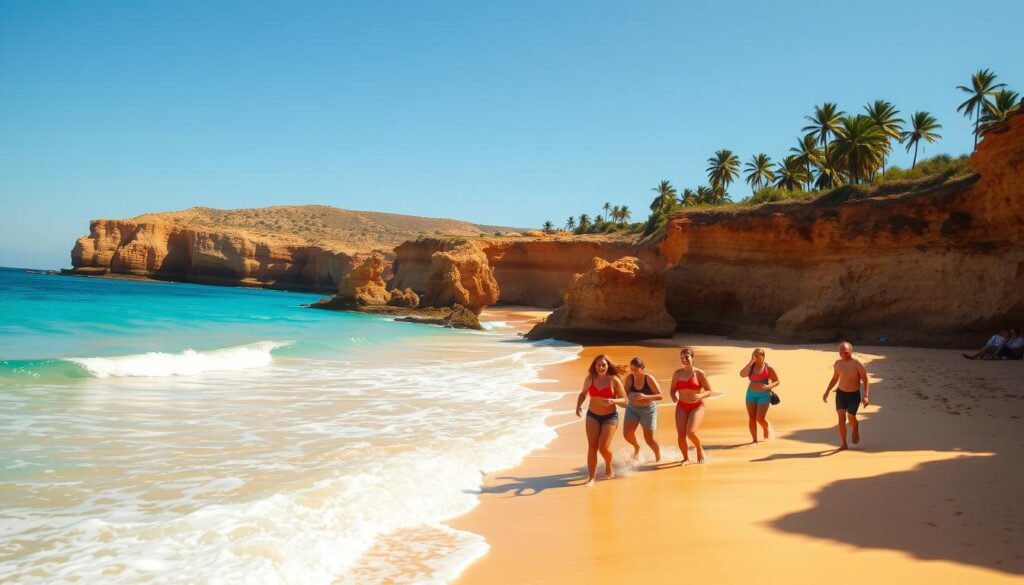
Australian beaches offer a unique experience with their incredible biodiversity and distinctive natural phenomena, making them a standout destination in the world.
The Top Beaches in Australia for Your Bucket List
From pristine white sands to crystal-clear turquoise waters, Australia’s beaches are a treasure trove of natural beauty.
Australia is home to a diverse range of beaches, each with its unique charm and attractions. Here are some of the top beaches to add to your bucket list.
Whitehaven Beach, Queensland
Whitehaven Beach is renowned for its stunning white silica sand and crystal-clear waters. Located in the Whitsundays, it is a popular destination for tourists and beach lovers alike.
The beach is part of the Great Barrier Reef Marine Park and is known for its untouched beauty and diverse marine life.
Turquoise Bay, Western Australia
Turquoise Bay is a picturesque beach located within Ningaloo Marine Park in Western Australia. It is famous for its turquoise waters and abundant marine life, making it a paradise for snorkelers and scuba divers.
The bay is sheltered from the open ocean, providing calm and clear waters ideal for swimming and snorkeling.
Hyams Beach, New South Wales
Hyams Beach, located in Jervis Bay, is known for having one of the whitest sands in the world. The beach is surrounded by the Jervis Bay National Park, offering a serene and natural environment.
The clear waters of Hyams Beach are perfect for swimming, kayaking, and other water activities.
Wineglass Bay, Tasmania
Wineglass Bay is a scenic beach located within Freycinet National Park in Tasmania. The bay is known for its distinctive wineglass shape and is surrounded by granite mountains and eucalyptus forests.
Visitors can enjoy hiking, swimming, and wildlife watching in this beautiful and pristine environment.
Cable Beach, Western Australia
Cable Beach, located in Broome, Western Australia, is famous for its 22km stretch of white sand and stunning sunsets. The beach is named after the undersea telegraph cable that was laid between Broome and Java in 1889.
One of the main attractions at Cable Beach is the sunset camel ride, offering a unique and memorable experience.
The beach is ideal for swimming during the dry season, but visitors are advised to avoid the water during the wet season due to the presence of marine stingers.
Iconic City Beaches Worth Visiting
From Sydney to Perth, Australia’s city beaches are must-visit destinations. These beaches offer a unique blend of urban convenience and natural beauty, making them a staple of the Australian coastal experience.
Bondi Beach, Sydney
Bondi Beach is one of Australia’s most iconic beaches, attracting millions of visitors each year. It’s renowned for its surfing conditions, making it a popular spot for surfers.
Visitors can take surfing lessons at one of the many schools along the beachfront. The beach is also patrolled by surf lifesavers, ensuring a safe swimming environment.
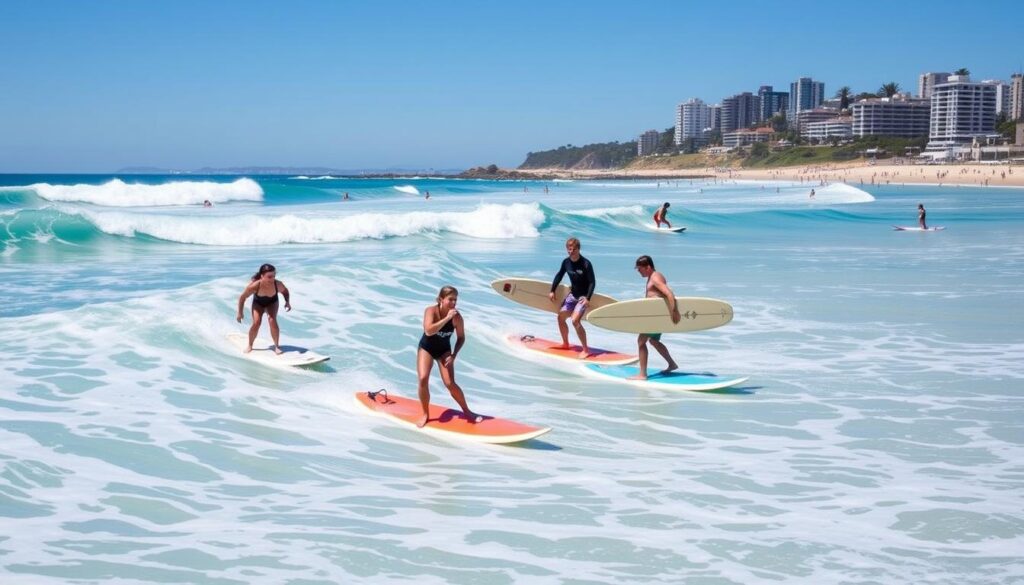
Cottesloe Beach, Perth
Cottesloe Beach is a favourite among locals and tourists alike, known for its pristine white sand and crystal-clear waters. The beach is lined with restaurants and cafes, offering a range of dining options.
Visitors can enjoy a meal at one of the many eateries, or simply relax on the sand and take in the views. Cottesloe Beach is a great spot to watch the sunset.
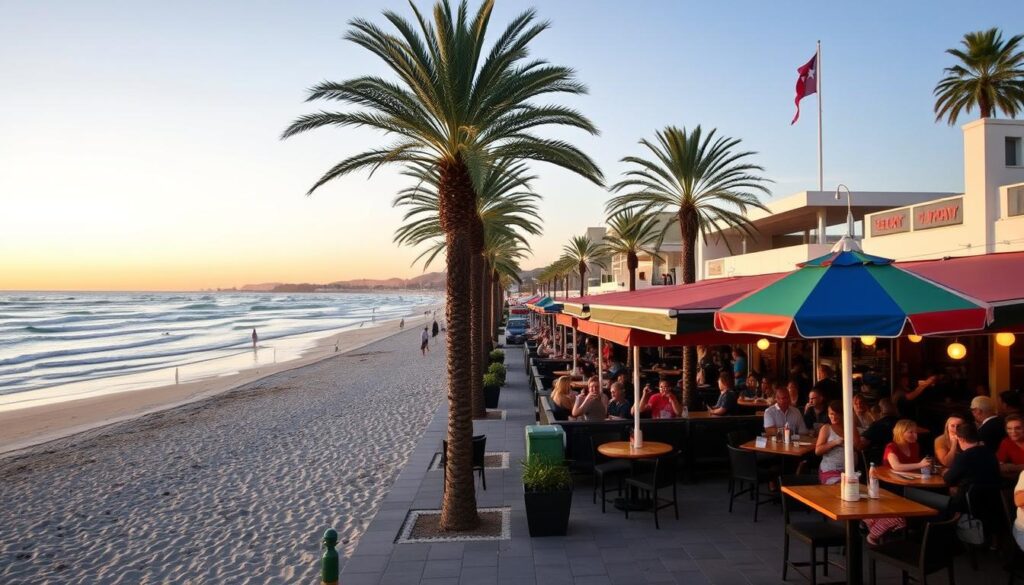
Scarborough Beach, Perth
Scarborough Beach has undergone significant redevelopment, emerging as one of Western Australia’s premier coastal destinations. The beach features a vast expanse of white sand and a modern esplanade with various amenities.
It’s a popular spot for surfers, with consistent waves that attract surfers of all skill levels. The beach also hosts numerous surfing competitions throughout the year.
Scarborough Beach offers a range of activities, including swimming, surfing, and simply relaxing on the sand. The beach’s expansive foreshore includes grassy areas, playgrounds, and exercise equipment, making it an ideal destination for families and fitness enthusiasts.
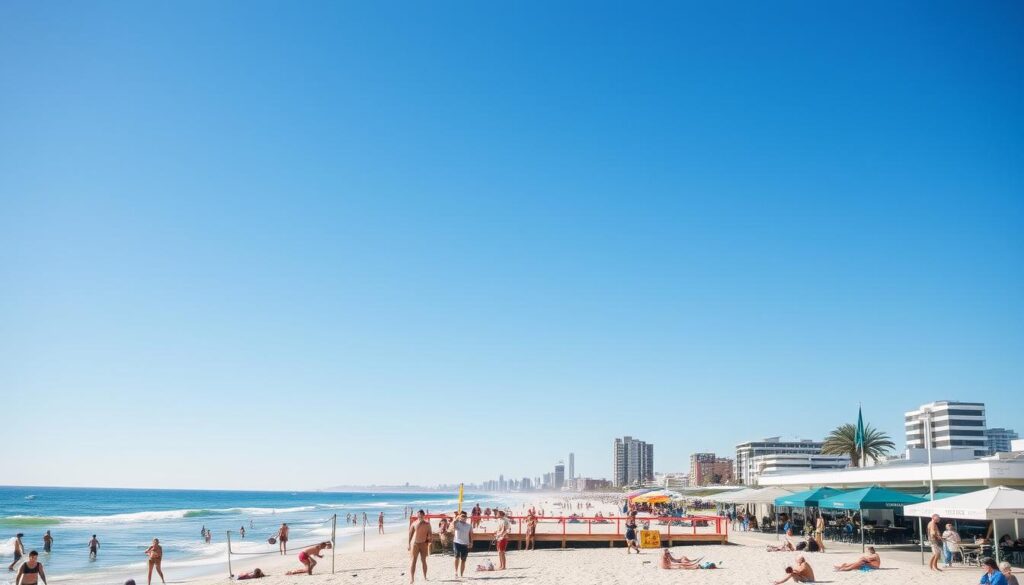
Hidden Coastal Gems
Australia’s hidden beaches offer a tranquil escape from the crowds, showcasing the country’s natural beauty. These secluded spots are perfect for those looking to unwind and connect with nature.
Bay of Fires, Tasmania
The Bay of Fires in Tasmania is a stunning stretch of coastline known for its crystal-clear waters and pristine beaches. Visitors can enjoy guided tours to explore the area’s natural beauty.
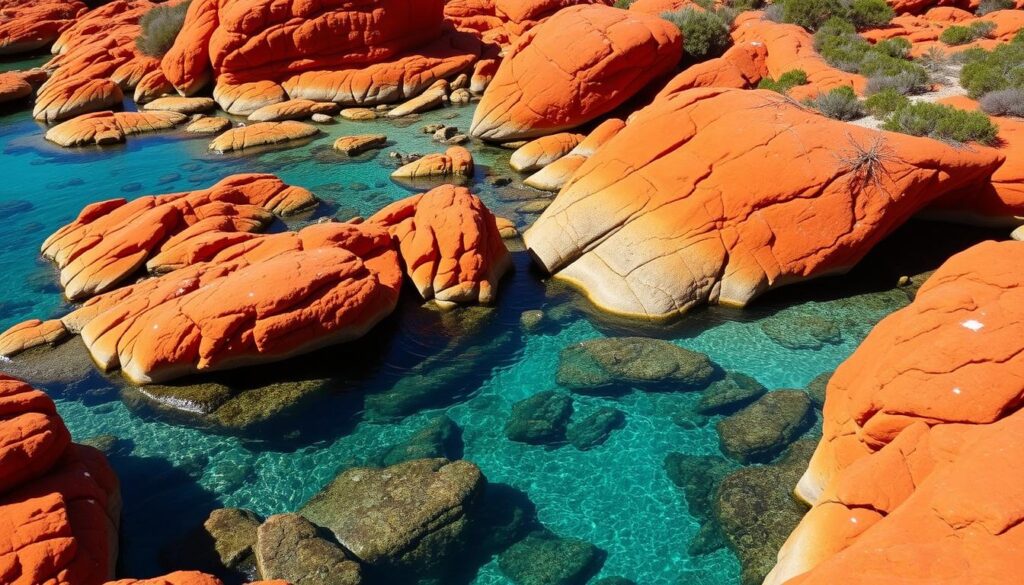
This region is not only visually breathtaking but also rich in history and wildlife, making it a must-visit destination for any beach enthusiast.
Emily Bay Lagoon, Norfolk Island
Emily Bay Lagoon on Norfolk Island is a picturesque spot ideal for snorkeling and swimming. The lagoon’s calm waters provide a perfect environment for spotting marine life.
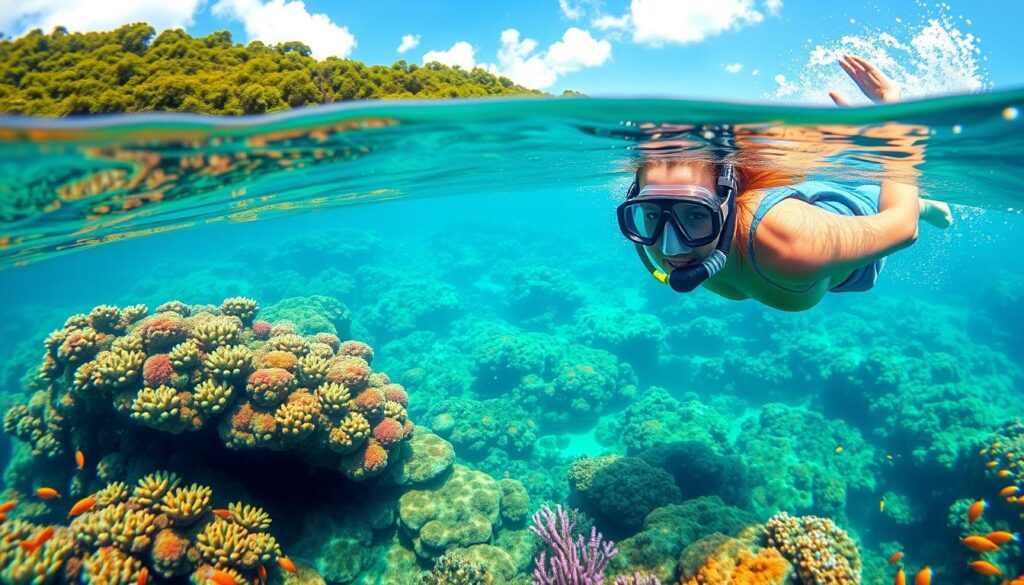
The bay is surrounded by lush vegetation and offers a serene atmosphere, making it an ideal location for relaxation.
Horseshoe Bay, Magnetic Island
Horseshoe Bay is the largest and most popular beach on Magnetic Island, a tropical paradise located just a 20-minute ferry ride from Townsville in North Queensland. The beach forms a perfect crescent of golden sand framed by granite boulders and swaying palm trees.
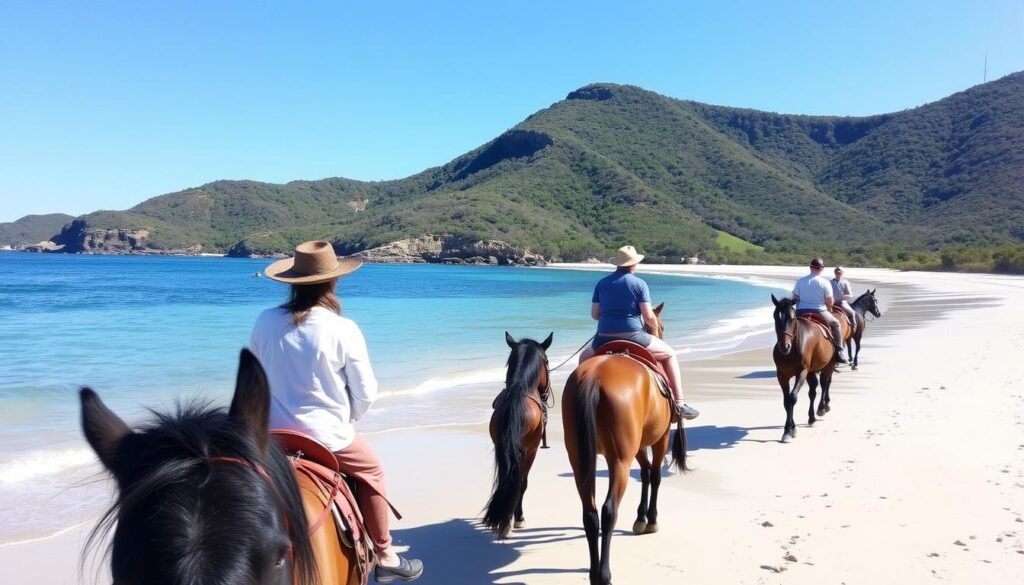
The bay offers excellent swimming conditions for most of the year, with stinger nets installed during the summer months to protect swimmers. Visitors can enjoy various water sports, including jet skiing and kayaking, and spot local wildlife such as koalas and sea eagles.
Best Beaches for Surfing Enthusiasts
For surfing enthusiasts, Australia offers some of the world’s most iconic and challenging waves. The country’s diverse coastline provides a variety of surf spots suitable for all levels, from beginners to professionals.
Bells Beach, Victoria
Bells Beach in Victoria is one of Australia’s most famous surf spots, known for hosting the Rip Curl Pro surf competition. The beach is renowned for its consistent waves and is a must-visit destination for surfers.
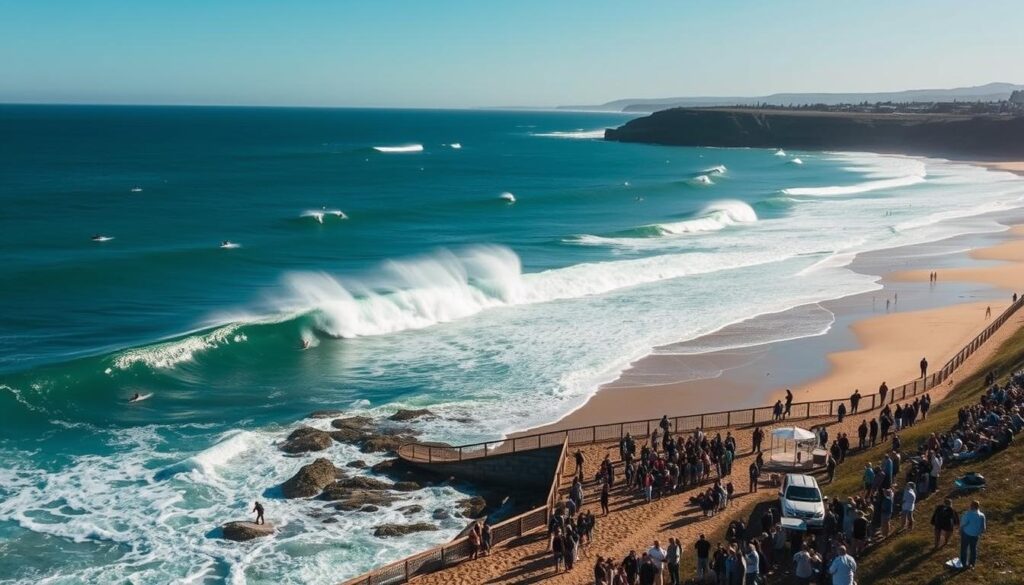
The beach’s exposure to the southwest means it receives consistent swells during the winter months, making it ideal for surfers looking to catch some of Australia’s best waves.
North Kirra Beach, Queensland
North Kirra Beach on the Gold Coast is a world-class surfing destination, ranked fourth in Australia’s best beaches for 2025. It’s part of the Gold Coast World Surfing Reserve, recognized for its exceptional wave quality and surfing heritage.
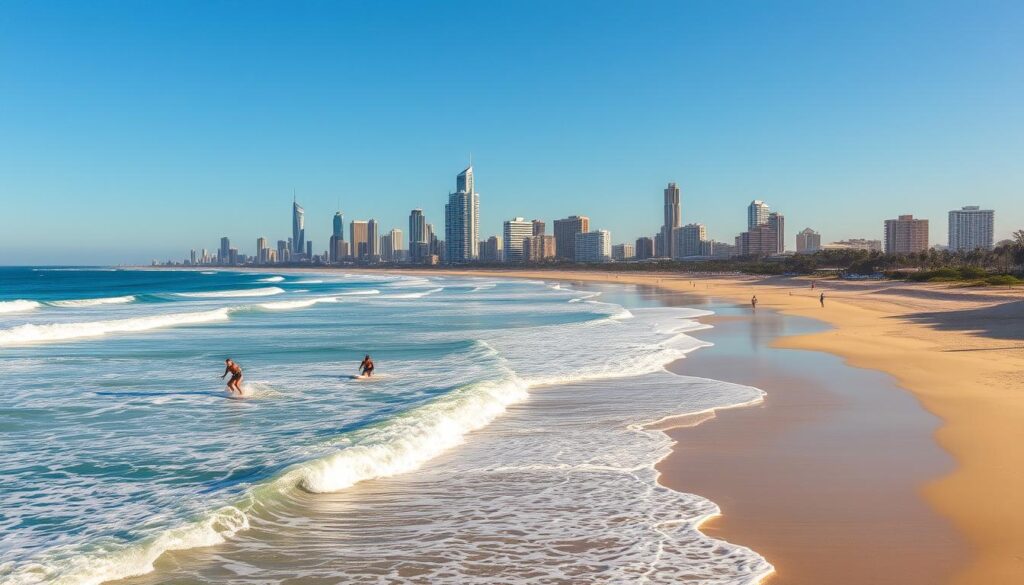
North Kirra Beach offers consistent, high-quality waves year-round, with the famous Kirra Point break nearby producing some of Australia’s most perfect tubular waves. The beach’s unique juxtaposition of natural surfing excellence against the backdrop of the Gold Coast’s iconic skyline creates a distinctive urban-meets-ocean atmosphere.
The beach’s proximity to Gold Coast Airport adds to its unique character, with the convenience of international access just minutes away. North Kirra has played a significant role in Australian surfing history, producing numerous champion surfers and featuring in countless surfing films and magazines.
When to Visit Australia’s Best Beaches
Australia’s diverse climate means that the best time to visit its beaches varies greatly depending on the region you’re planning to visit.
The northern beaches, particularly in Queensland and the Northern Territory, are best enjoyed during the dry season from May to October. This period offers less rainfall, lower humidity, and a reduced risk of marine stingers.
In contrast, southern beaches in New South Wales, Victoria, South Australia, and Tasmania are most pleasant during summer (December to February) when the waters are warmest for swimming under the sun.
| Region | Best Time to Visit | Reason |
|---|---|---|
| Northern Australia (Queensland, Northern Territory) | May to October | Dry season, less rainfall, lower humidity |
| Southern Australia (New South Wales, Victoria, South Australia, Tasmania) | December to February | Warmest waters, ideal for swimming |
| Western Australia (Perth and southern beaches) | November to April | Pleasant weather, warm waters |
Understanding these regional variations can help you plan your beach trip to Australia, ensuring a more enjoyable experience.
Beach Safety Tips for Australian Shores
Enjoying Australia’s iconic beaches requires more than just a love for the sun, sand, and surf; it demands an understanding of the safety measures needed to navigate these natural wonders.
Australian beaches can present various hazards, including strong rips, marine stingers, and dangerous surf conditions. To ensure a safe and enjoyable experience, follow these essential safety tips.
- Always swim between the red and yellow flags at patrolled beaches, as these areas are monitored by trained lifeguards.
- Be aware of rip currents, which can be identified by deeper, darker water or fewer breaking waves.
- If caught in a rip, remain calm and try to swim parallel to the shore to exit the rip.
- Check local signage for specific hazards such as submerged rocks or strong currents.
- In northern Australia, be aware of marine stingers during the wet season and swim in netted areas or wear protective stinger suits.
- Be sun smart by applying high-SPF sunscreen, wearing protective clothing, and staying hydrated.
- Respect wildlife by keeping a safe distance and never feeding or approaching animals like crocodiles.
By following these guidelines, you can enjoy Australia’s beautiful beaches while minimizing the risks associated with them.
Planning Your Australian Beach Bucket List Adventure
To truly experience Australia’s beach paradise, it’s essential to plan your trip strategically, focusing on specific regions. Australia’s vast coastline means that attempting to visit all its beaches in one trip can be daunting.
When planning, consider concentrating on particular coastal areas rather than trying to cover the entire country. The East Coast route from Sydney to Cairns is ideal for a classic beach road trip, offering numerous iconic beaches along the way.
- Focus on beach-rich regions like the Whitsundays, Great Ocean Road, or Margaret River for a more condensed and fulfilling experience.
- Take into account the seasonal factors that affect beach conditions – northern beaches are best during the dry season, while southern beaches are more enjoyable during summer.
- Research and book your accommodations well in advance, especially during peak travel seasons.
For those venturing to remote beaches, ensure your vehicle is suitable for the terrain, as many of Australia’s most beautiful beaches require 4WD access. Building flexibility into your itinerary allows for spontaneous detours and the chance to linger at your favorite spots, making your beach adventure even more enjoyable as you drive along the stretch of sand.
Conclusion: Paradise Found on Australia’s Shores
As we reach the end of our exploration of Australia’s best beaches, it’s evident that the country’s coastal environments are truly special. Australia’s beaches represent some of the world’s most pristine and diverse settings, offering experiences that range from tropical paradise to dramatic wilderness.
The country’s commitment to preserving its coastline means many beaches remain in near-pristine condition, providing visitors with authentic natural experiences. Whether you’re seeking crystal-clear waters for snorkeling or endless stretches of white sand for walking, Australia’s coastline offers a beach to fulfill every dream, with breathtaking views.
With 11,761 beaches to choose from, you’re sure to find your perfect stretch of sand and sea. Australia’s beach culture is an integral part of the national identity, and visiting these shores offers a unique insight into this aspect of Australian life.
FAQ
What is the best time to visit Australian beaches?
The best time to visit Australian beaches depends on the region and your preferences. Generally, the summer months (December to February) are ideal for swimming and sunbathing, while the autumn months (March to May) and spring months (September to November) are great for surfing and outdoor activities.
Are there any beaches suitable for surfing in Australia?
Yes, Australia is renowned for its world-class surf spots. Some of the most popular surfing beaches include Bells Beach in Victoria and North Kirra Beach in Queensland, which attract surfers from around the world.
Can I spot dolphins or other marine life at Australian beaches?
Yes, many Australian beaches offer opportunities to spot dolphins and other marine life. For example, in Jervis Bay, you can swim with dolphins, and in some areas, you may even see whales during their migration seasons.
Are there any secluded or hidden beaches worth visiting?
Yes, Australia has many hidden coastal gems, such as the Bay of Fires in Tasmania and Emily Bay Lagoon on Norfolk Island, which offer serene and untouched beauty.
What safety precautions should I take when visiting Australian beaches?
Always swim between the red and yellow flags, which indicate the safest areas. Be aware of the surf conditions, rip currents, and marine life, and follow the advice of local lifeguards.
Can I go fishing at Australian beaches?
Yes, many Australian beaches offer excellent fishing opportunities. However, be sure to check local fishing regulations and obtain any necessary permits before you start fishing.
How do I get to some of the more remote beaches in Australia?
Some remote beaches can be accessed by car, while others may require a hike or a boat trip. Research your destination and plan your trip accordingly, considering the time and resources required to reach your chosen beach.

